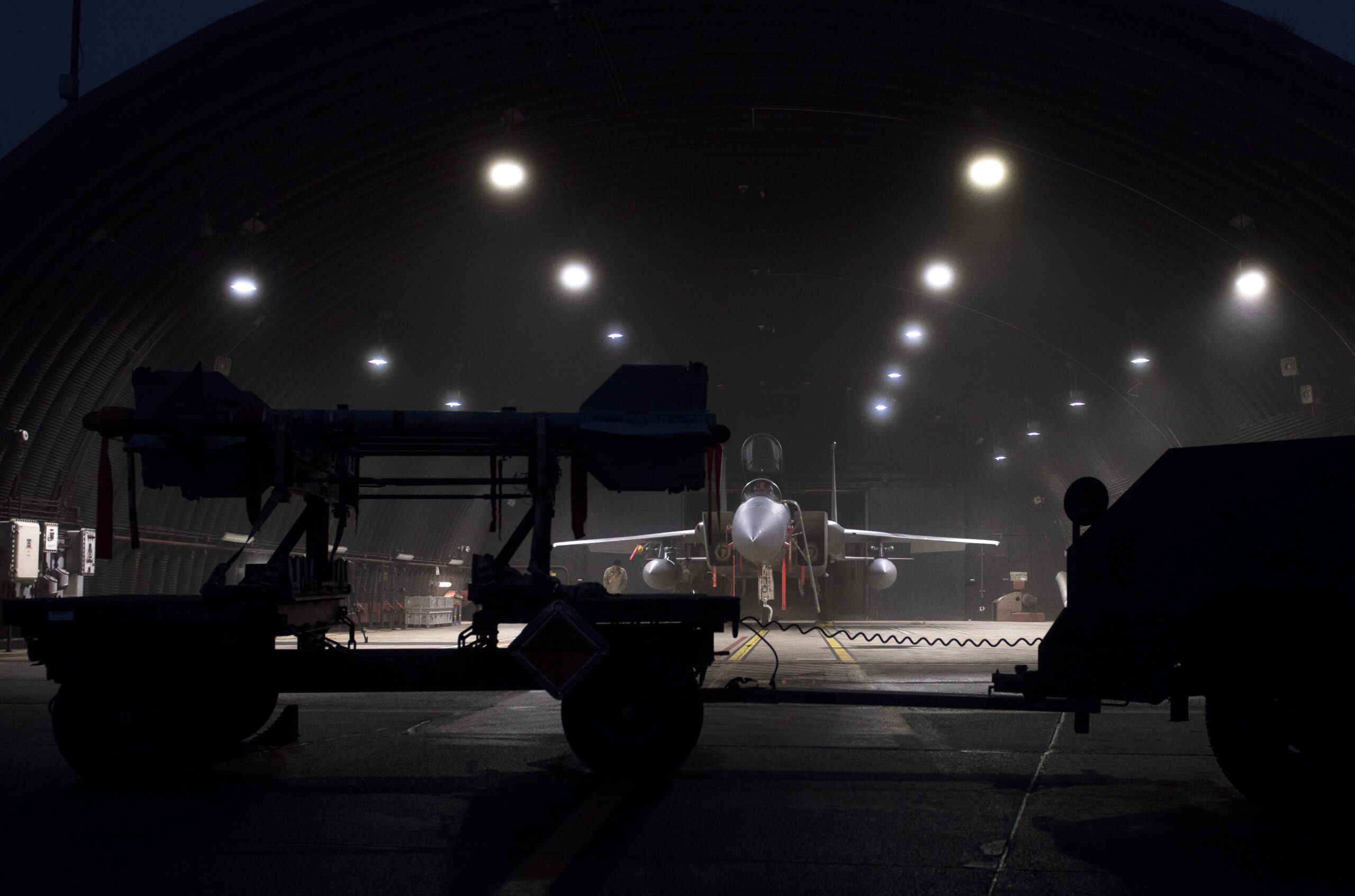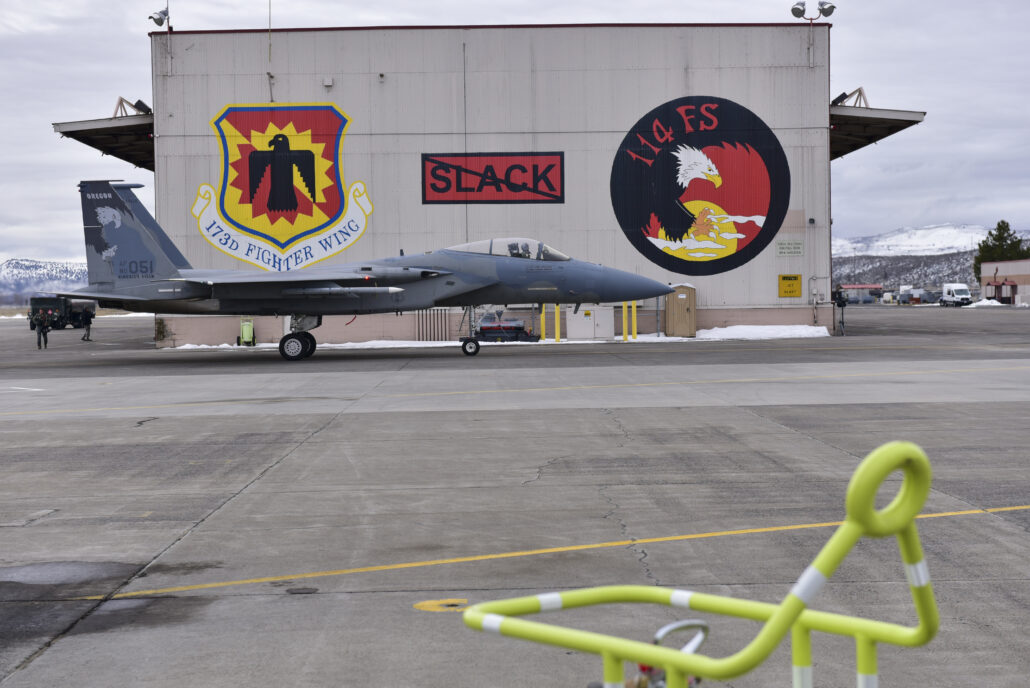By Airman 1st Class Jessi Monte
ROYAL AIR FORCE LAKENHEATH, England —
ROYAL AIR FORCE LAKENHEATH, England – F-15C Eagles and F-15E Strike Eagles assigned to Royal Air Force Lakenheath, England, participated in a live missile fire exercise Dec. 8-10, 2020.
The exercise was conducted in conjunction with QinetiQ, a UK-based multinational defense technology company. The aircraft carried modified AIM-9M infrared-guided missiles fired at flare packs being towed 300 feet behind a drone.
This was the first time in four years that 48th Fighter Wing pilots have been able to participate in this type of training. Live fire exercises usually involve the fighter squadrons deploying to Tyndall Air Force Base, Florida, to participate in Combat Hammer, which is a Weapons System Evaluation Program.
“This time, we were able to get academics from the Tyndall AFB personnel on how to safely execute the live missile shoot successfully,” said Captain Nathan Hartoin, 493rd Fighter Squadron chief of weapons and tactics. “Since we were able to execute the event from home station, we were able to accomplish a very important task while spending significantly less money.”
Airmen from the 48th Munitions Squadron converted the AIM-9M missiles to NATM-9M, or Special Air Training Missiles, which consisted of replacing the tactical warhead with an inert warhead, and modifying the rocket motor for employment from the F-15 aircraft.
“This particular missile modification is normally performed by only one maintenance unit located at Tyndall AFB,” said Senior MSgt. Christopher Castillion, 48th MUNS munitions production flight chief. “In this case, we were lucky enough to gain authorization to perform the modification here at Royal Air Force Lakenheath with our Airmen.”
Employing munitions needed in a real combat environment provides pilots the combat representative training that can’t be fully imitated in the simulation or during day-to-day training with inert weapons.
“Firing a missile gives the pilot the sense of how quickly the interaction takes place and presents a realistic sense of capability,” said Hartoin. “It is very important to get this practice in a peacetime environment to ensure full capability during a wartime setting.”
This training gives fighter squadrons in the United States Air Forces in Europe – Air Forces Africa a routine opportunity to test the man, the machine, and the missile.
“You get real-world experience with live missiles, from the ground to the range,” said Capt. John Bynum, 493rd FS electronic combat pilot. “From pre-flight checks to pressing the button and seeing the missile smoke the target, that experience can’t be completely replicated with inert captive air training munitions.”
According to Lt. Col. Anthony May, 493rd Fighter Squadron commander, live air-to-air weapons employment in the European theatre is vital to maintaining operational readiness and strategic messaging.
“This type of experience provides a deterrent effect to potential adversaries by outwardly exhibiting readiness,” said May. “It demonstrates the Liberty Wing’s commitment to allies, showing the capability to deliver air superiority across Europe.”



